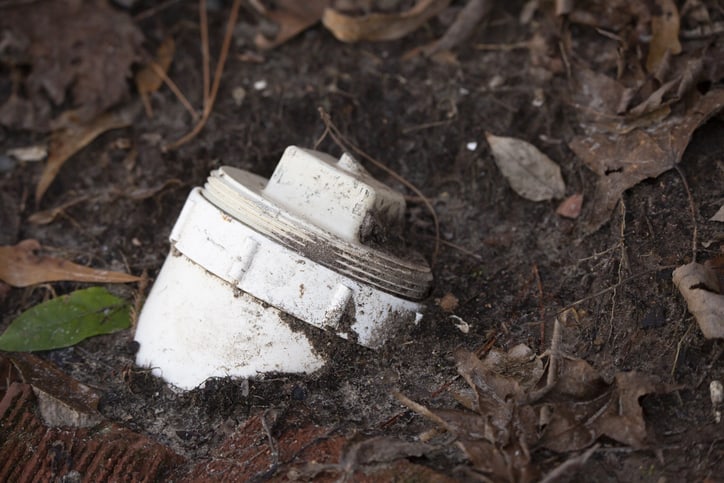
If you are having problems with your sewer system, it is a serious matter that you need to fix as soon as possible. A sewer cleanout is an important part of your homes’ drainage system.
Residential sewer cleanouts are access points to the drain lines that carry wastewater from your home to the city sewer or your septic tank. Sewer cleanouts allow you to maintain your drainage pipes. If you have a problem with drainage, you can use the cleanout to find the obstruction and remove it. Residential sewer cleanouts are an important part of your plumbing, and understanding them will help you to keep your drainage system working correctly.
The following article will teach you more about your residential sewer cleanout. Reading this will help you to identify sewer cleanout problems and find solutions.
How Does a Sewer Cleanout Work?
A sewer cleanout is a hole in the lateral sewer line that connects your house to the sewer system with a removable cap on it. Opening the cap gives you access to the drain pipe without having to excavate or cut the drain pipe.
A typical plumbing system uses smaller drain pipes that empty sinks, showers, and washing machines into a four-inch drain pipe that connects to the sewer. The main drain pipe is normally longer and runs underground, so having a cleanout is the way that the main drain pipe can be inspected or cleaned.
A cleanout is made by installing a Y fitting into the main drain line. The cleanout is a stub of pipe that has a threaded cap on it.
The Y shape of the cleanout allows a drain auger to slide in one direction so that it can reach an obstruction in the pipe. Plumbers can also use the cleanout to send a camera into the drain and identify problems.
The cleanout also can help prevent sewage from backflowing into your home. If you have a clog in your lateral sewer line, you can open the cleanout and excess sewage will come out there instead of other drains in your home.
Does Every Drain Need a Cleanout?
Not every drain needs to have a cleanout because most are shorter pipes that are all located in the house. Some drains may have cleanouts, like the kitchen sink, a washing machine, the bathtub or the dishwasher.
Most drains have a P trap, which holds water in it that blocks sewer gases from coming up through the drain. The P trap can be removed and cleaned and will give you access to the rest of the drain so you don’t need a separate cleanout.
How to Find a Sewer Cleanout
There are several places to look to find a sewer cleanout.
- In most cases, you will find the sewer cleanout outside of the home. They are normally located within three feet of the foundation of the house or near the connection to the sewer main.
- If your home has a basement, the cleanout may be located in the basement.
You can identify the sewer cleanout by the square peg that sticks out from the cap. The square peg allows you to grip the cap with a crescent wrench or pipe wrench to tighten it or loosen it.
On new homes, the cleanout will be made from white, 4’’ PVC pipe. In homes built before the 1960s, the cleanout could be made from cast iron pipe, which has a black or rusty appearance.
Larger homes with more complex drainage systems can have multiple cleanouts.
How to Find a Buried Sewer Cleanout
Over time an outdoor sewer cleanout that is not checked and maintained can get buried. First, find out where your lateral sewer line meets the city’s main sewer line.
If you have a sidewalk, this point might be marked with an “S.” Sight a straight line to your home from the mark, and it is likely your lateral sewer line is there.
You can use a trowel or shovel to gently poke into the earth along this line, the cleanout is most likely buried near the surface. Don’t stab too hard into the ground, as you could damage your cleanout.
If you can’t find your cleanout this way, a plumber will have special tools that can help to locate a buried drain line.
Do All Houses Have a Sewer Cleanout?
Older houses that were built before cleanouts were required may not have a sewer cleanout.
Building codes require that drainage systems have a cleanout on the lateral sewer line. If your home doesn’t have a cleanout, it was probably built before there was such a building code.
What If I Don’t Have A Cleanout?
If your home does not have a sewer cleanout and you are having drainage problems, it is probably time to install a new lateral sewer line with a cleanout. It is possible to clean a sewer line without a cleanout, but it is more difficult.
The sewer line can be accessed through the sewer vent on the roof of the house. This vent is meant to let sewer gases escape up above the house, where the odors won’t be noticed. Accessing the sewer this way is not ideal because working on the roof can be dangerous.
You could also access the sewer line through a toilet drain, which is a larger size pipe. But this will require removing the toilet.
These cleaning options can get you by without installing a new lateral sewer line, but they are more expensive and are not a long-term solution.
Signs That Your Sewer Line is Clogged
A clogged sewer line is often an emergency, as dangerous waste will back up into drains and pose the risk of infecting the inhabitants of the house. If you ever notice black, stinky water coming up from a shower or bathtub drain, that is a sign that the sewer line is in trouble.
Other signs of a clogged sewer line include:
- Strange noises from the toilets
- All sink drains taking too long to drain (a single slow sink drain could be a problem with just that sink)
- Bad smells in the bathrooms and near other drains
- Smelly water around the drain in the basement floor
How to Clean your Sewer Line
In some cases, you will be able to clean your sewer line and unclog it yourself. You will need a drain auger, which can be rented from a tool rental business. Wear leather gloves and protect your skin from raw sewage.
- Start by opening the sewer cleanout with a wrench
- If the clog is bad, the pressure built up will cause sewage to spill out
- Allow all the sewage to come out before continuing
- Follow the instructions that came with the auger
- Feed the auger line into the cleanout opening
- Keep pushing the auger into the sewer, you will eventually hit the blockage and it will get difficult to push the auger
- If you are using a hand-operated auger, you need to lock the cable in place and turn the handle, which will screw the auger bit through the blockage
- If you are using a power auger, the machine will turn the cable for you
- You will know the blockage is broken when water in the cleanout drains away
- Continue to push the auger as far as you can, there may be other obstructions to clear
- Spray your garden hose on full blast into the drain, cleaning the auger cable while pulling it out
- Make sure the water is draining, if not, keep moving the auger cable through the drain
- You can also test the drain by flushing a toilet a few times, the water should go down and not come up into the cleanout
- Remove the auger from the drain, spraying it with water to clean it off
- Rinse the auger cable well before putting it away
- Replace the cap on the sewer cleanout
If you are unable to break through the clog in your sewer line, you will need to call a professional plumber. This could mean that the roots of plants in your yard have found your sewer line and have entered the pipe.
They will need to use special equipment to remove the roots from the drain line, or they may have to install a whole new lateral sewer line.
How Often to Clean your Sewer Line
To maintain your sewer line and make sure you won’t have any problems, it is recommended to clean it every 18 to 22 months. Many homeowners will get lucky and never have to clean their sewer line or have any problems.
Being careful not to allow large objects into your drain will help prevent sewer problems. Be careful with what you put down the drain and you are unlikely to have problems.
Cost of Sewer Line Inspection and Cleaning
Having your sewer line cleaned is a low-cost service that can prevent dirty and expensive problems. HomeAdvisor estimates that a preventative sewer cleaning could cost as low as $99, with an average price of $326.
If you have a sewer clog, the price for unclogging is estimated at $350 to $650, according to Fixr.
For peace of mind or if you are having persistent drainage problems, you may want to have your sewer line inspected. A sewer inspector can insert a camera into your sewer line and identify any problems.
The cost for a sewer line inspection averages $739, according to HomeAdvisor.
Cost to Replace a Sewer Lateral Line
If an inspection shows that you need to replace your sewer lateral line, HomeAdvisor estimates the average price to be $2,868. The average per foot of pipe replaced is from $50 up to $250.
To replace a sewer lateral line, you will need to dig a trench deep enough and wide enough to remove the old pipe and then install a new one. This job usually takes about two days for a professional drain replacement company.
Can a Sewer Line Be Repaired?
If an inspection shows the right conditions, a drainage expert might recommend a trenchless repair. This involves inserting a sort of balloon with an epoxy tube around it, then inflating the balloon.
The epoxy tube is pushed against the sides of the pipe by the balloon, then fills any leaks and hardens in place. The balloon is removed and the sewer lateral is repaired.
A trenchless repair is much less invasive to your yard and will save you some money.

